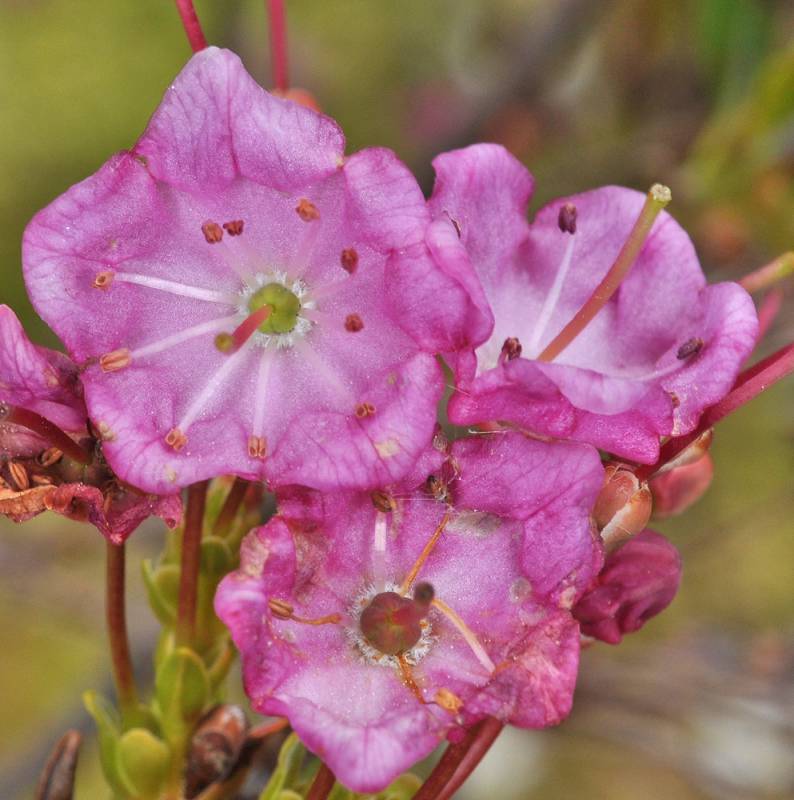Hosted by the University of Washington Herbarium, Burke Museum
Publication: Rhodora. 76: 340. 1974.
Origin: Native
Herbarium search: CPNWH
Notes: FNA8: "Kalmia microphylla is highly variable and has been treated as two species (J. K. Small 1914), two subspecies (R. L. Taylor and B. MacBryde 1978), or two varieties (J. E. Ebinger 1974). A flavonoid study (S. Liu 1993) indicated that the Pacific lowland (from Washington to Alaska) var. occidentalis populations are hardly separable from the alpine var. microphylla populations. The flavonoid data cited in support of combining K. microphylla and K. occidentalis are unpublished and impossible to judge. In any case, one would not expect varieties to necessarily differ chemically; the morphological and ecological differences seem sufficient.
The two varieties of Kalmia microphylla are generally distinct; var. microphylla is common in alpine meadows of western North America from California through the Rocky Mountains into northern Canada and Alaska. The elevations at which it is found range from an average 2500 meters (1500-3500 m) in California to an average 1700 meters (900-2200 m) in Alberta, British Columbia, and Washington. Variety occidentalis, in contrast, is always encountered growing below 900 meters, being common in coastal areas and islands off the coast of Alaska and British Columbia. These two varieties are known to hybridize (J. E. Ebinger 1974), and the hybrids are highly fertile and set large quantities of viable seed (R. A. Jaynes 1988).
Variety occidentalis and Kalmia polifolia are strikingly similar. Both have the same general habit and size and are very similar in most morphological characteristics. These taxa are easily separated by the revolute leaf margins and small stalked glands along the leaf midrib in K. polifolia, which are lacking in var. occidentalis (J. E. Ebinger 1974). Hybrids between them are sterile (R. A. Jaynes 1988)."
Last updated 1/21/2024 by David Giblin.

